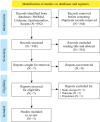Effects of pulsed electromagnetic fields on bone fractures: a systematic review update
- PMID: 39387850
- PMCID: PMC11729704
- DOI: 10.23736/S1973-9087.24.08226-1
Effects of pulsed electromagnetic fields on bone fractures: a systematic review update
Abstract
Introduction: Fractures are common bone injuries, which have a great burden on global health. Fracture healing is a long-term process that may be influenced by a number of factors. The 10-15% of all bone fractures may be complicated by an impaired healing (i.e. delayed union or non-union). The application of weak electromagnetic fields has been proposed to have different effects on bones such as enhancing proliferation - orientation - migration of osteoblast-like cells and supporting osteogenic differentiation in bone marrow-derived mesenchymal stem cells. Despite the amount of evidence on cellular and histological effects, to date the application of pulsed electromagnetic fields has not achieved univocal consensus in daily practice. The purpose of this systematic review update is to research, select, analyze and summarize the most recent scientific evidence regarding the effects of pulsed electromagnetic fields in the treatment of acute bone fractures.
Evidence acquisition: A systematic review using the following MeSH terms (Magnetic Field Therapy; Electromagnetic Fields; Bone and Bones; Fractures, Bone; Fractures Healing) and strings {("Magnetic Field Therapy [mh]" OR "Electromagnetic Fields [mh]) OR "magnetotherapy" OR "pulsed electromagnetic field") and ("Fractures, bone [mh]" OR "Bone and Bones [mh]") and ("Fractures Healing [mh]")} was conducted on PubMed, Cochrane Library, Epistemonikos and Scopus electronic databases. Only full articles published in English between January 2014 and December 2022 were considered. Eligibility criteria were defined according to the Population, Intervention, Comparison, Outcomes, and Study (PICOS) design framework. Case reports, case series, uncontrolled studies and expert opinions were excluded. All articles were checked for quality and risk of bias.
Evidence synthesis: Three randomized controlled trials were included (197 patients in total). None of the studies found significant effects of pulsed electromagnetic fields on the acute bone healing process. Contradictory results about pain relief emerged. Only one study showed a transitory positive effect of pulsed electromagnetic fields on strength and range of motion recovery in patients with acute bone fracture.
Conclusions: This systematic review update does not support the use of pulsed electromagnetic fields for improving the bone healing process in patients with acute fractures. Controversial evidence was found about the effects of pulsed electromagnetic fields on pain and functional recovery. Considering the scant and heterogenous literature published to date, which represents a limit for our conclusion, further studies with rigorous and high-quality methodology are needed.
Conflict of interest statement
Figures
References
-
- Cauley JA. The global burden of fractures. Lancet Healthy Longev 2021;2:e535–6. https://www.ncbi.nlm.nih.gov/entrez/query.fcgi?cmd=Retrieve&db=PubMed&l... 10.1016/S2666-7568(21)00183-5 - DOI - PubMed
-
- GBD 2019 Fracture Collaborators. Global, regional, and national burden of bone fractures in 204 countries and territories, 1990-2019: a systematic analysis from the Global Burden of Disease Study 2019. Lancet Healthy Longev 2021;2:e580–92. https://www.ncbi.nlm.nih.gov/entrez/query.fcgi?cmd=Retrieve&db=PubMed&l... 10.1016/S2666-7568(21)00172-0 - DOI - PMC - PubMed
-
- Mirhadi S, Ashwood N, Karagkevrekis B. Factors influencing fracture healing. Trauma 2013;15:140–55. 10.1177/1460408613486571 - DOI
-
- Einhorn TA, Gerstenfeld LC. Fracture healing: mechanisms and interventions. Nat Rev Rheumatol 2015;11:45–54. https://www.ncbi.nlm.nih.gov/entrez/query.fcgi?cmd=Retrieve&db=PubMed&l... 10.1038/nrrheum.2014.164 - DOI - PMC - PubMed
-
- Cheng C, Shoback D. Mechanisms underlying normal fracture healing and risk factors for delayed healing. Curr Osteoporos Rep 2019;17:36–47. https://www.ncbi.nlm.nih.gov/entrez/query.fcgi?cmd=Retrieve&db=PubMed&l... 10.1007/s11914-019-00501-5 - DOI - PubMed
Publication types
MeSH terms
LinkOut - more resources
Full Text Sources
Medical


